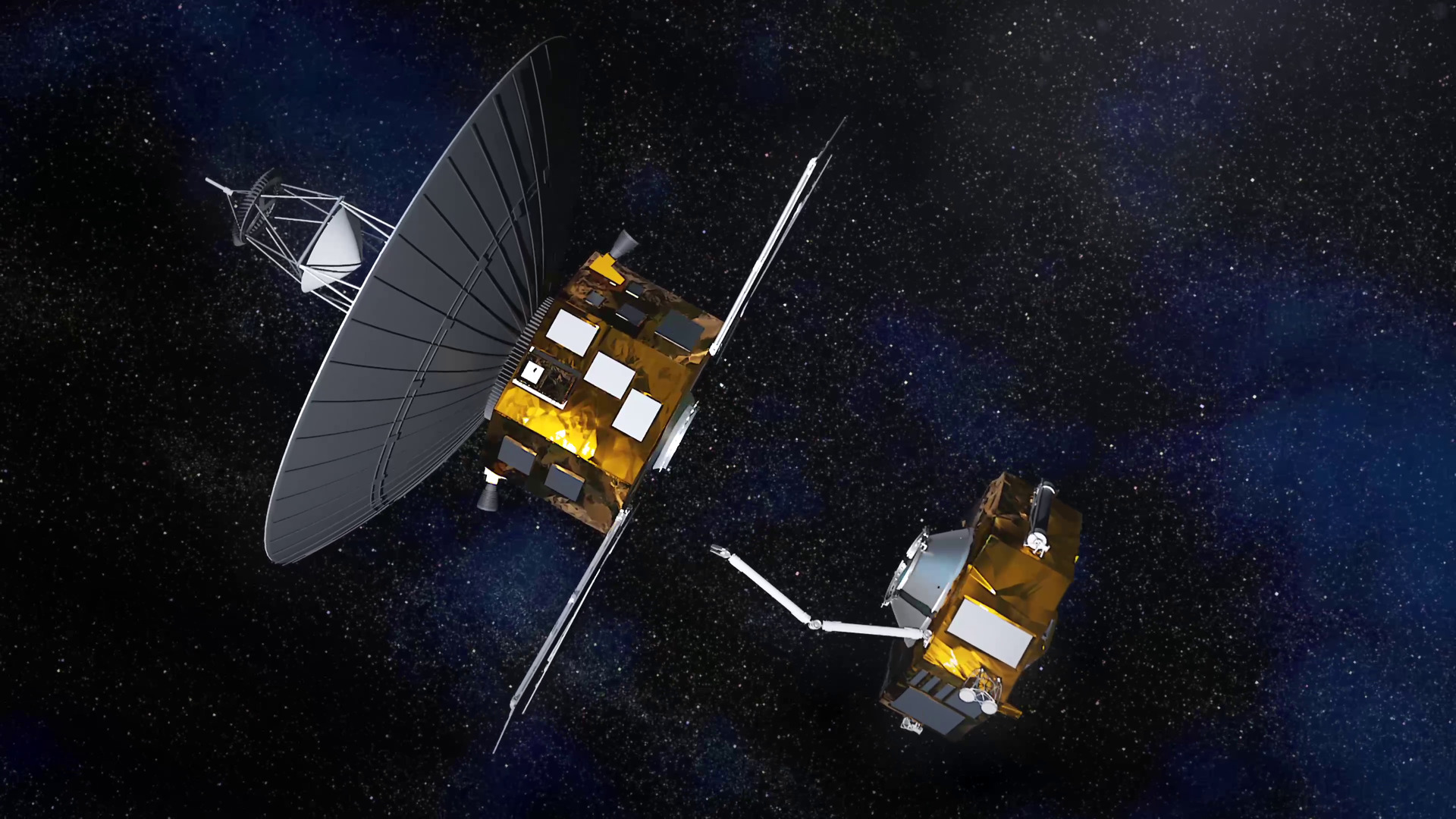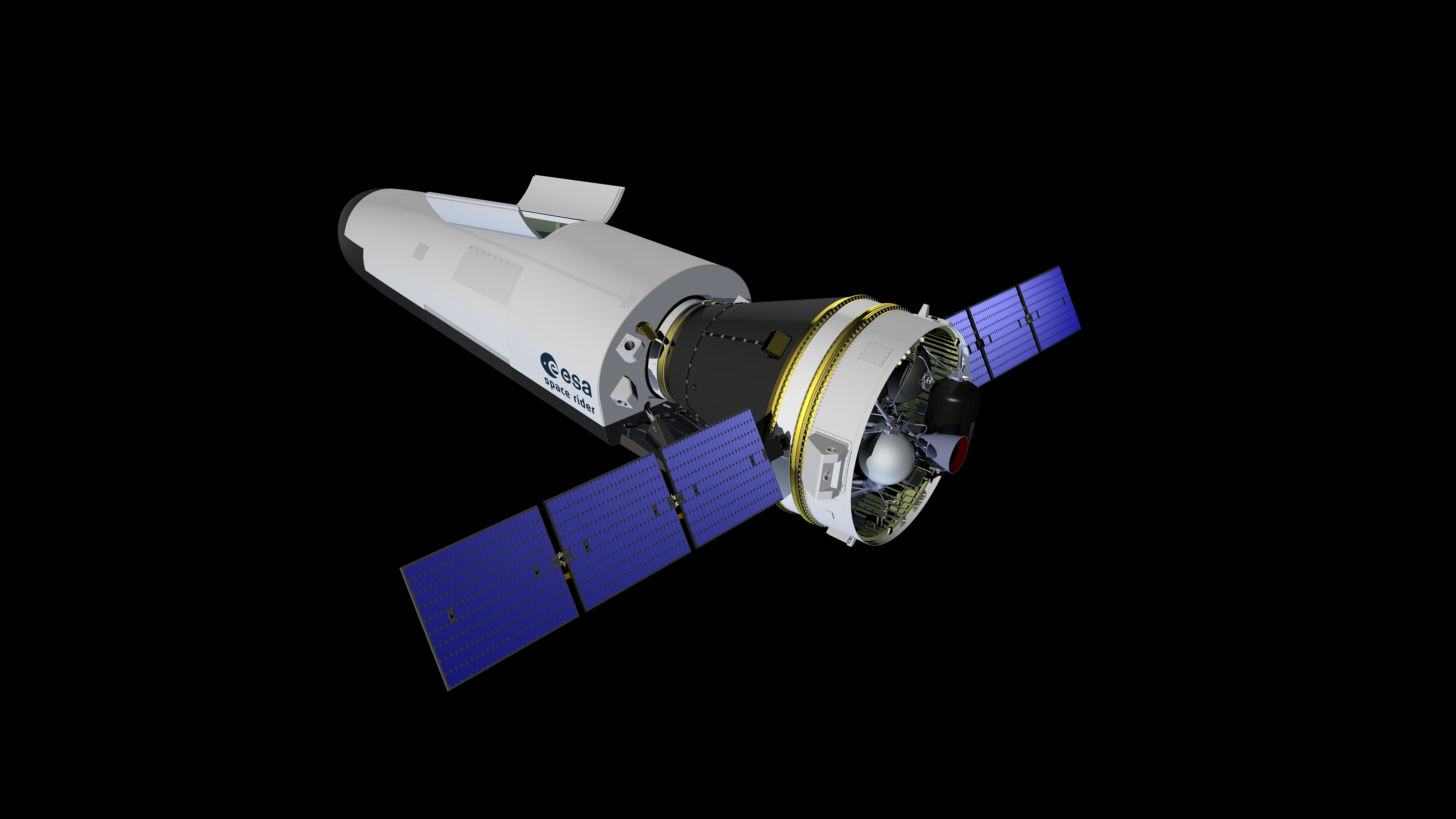Towards sustainable space exploration
If we were to lay just one accusation at humanity’s door, it would be that we don’t take care of our planet. Some fear we might one day treat space with the same reckless abandon – and see innovation as the solution. One such person is Sabrina Andiappane, who heads new business initiatives and space robotics projects at Thales Alenia Space.
Let’s start with an observation: without satellites, our daily lives would be drastically different.

Satellites enrich our lives in obvious ways. They allow us to forecast the weather, find our way around, and communicate with one another across continents and oceans, day and night.
But we often forget that satellites save lives – literally. When natural disasters knock out ground telecommunications networks, satellites take over the heavy lifting. They also give us the technological capability to monitor climate change and the environment, helping us to protect the planet.
It’s no longer possible to imagine life without satellites. But as the potential of space technology has grown, so has the number of satellites in space. Since the Space Age began in 1957, we’ve launched thousands of rockets, satellites and instruments of all kinds into orbit. There are currently around 5,400 satellites circling above our heads, and the number is set to grow by more than 10,000 in the next decade. And in the medium to long term future, all those orbiters are going to generate a huge amount of space debris.
What can we do about it?
We already have international laws and standards on sustainable space exploration. For instance, design rules state that rockets and space vehicles should shed as little debris as possible during take-off and operation. And when a satellite reaches the end of its useful life, it can be shunted into a significantly higher "graveyard" orbit.
At Thales Alenia Space, we’re developing new space vehicles for precisely this purpose – what we call “On-Orbit Servicing”. These vehicles will be able to carry out a wide range of operations in orbit, including inspection, extending a satellite’s service life, refuelling, maintenance and repair, and de-orbiting space debris.
There are other promising initiatives for cleaning up space junk. The European Space Agency’s ClearSpace-1 project1 is one example. But we’re taking a different approach, drawing on our experience on several European H2020 projects (I3DS, EROSS and the ongoing EROSS+ project). For us, the answer lies in preventive on-orbit servicing.
The average satellite has a lifespan of 5 to 15 years, depending on its mission. But what do you do if something happens while your satellite is in service – say, the batteries die or it runs out of propellant?2 Sending an astronaut up there to fix the problem is out of the question. It simply isn’t worth the cost, or, more importantly, the risk. Normally, if something breaks, you pick up the phone to customer services. We’re merely applying that same thinking to space!
How does it work in practice?
The plan is to send up specially designed space vehicles with robotic arms, grippers and various other tools. They will analyse the satellite’s environment, set a course, dock and carry out whatever tasks they’ve been set – servicing, refuelling, repairs or updates, for example.

The benefit of this approach is that it would extend the satellite’s service life to delay the date when it needs to be replaced. And when satellites do reach the end of their life, we could use our vehicles to shunt them into a cemetery orbit or push them down towards Earth, where they’d burn up on re-entry.
Isn’t this the stuff of science fiction?
Not at all. At Thales Alenia Space, we’ve been developing innovative systems and technologies for robotic space missions for the past 15 years. And we’ll be deploying these technologies in our forthcoming projects.
Can you give us some examples?
We’re currently developing an on-orbit refuelling system for ESA’s Esprit programme. The module – the only one of its kind in Europe – will form part of the Lunar Gateway orbiter programme, which kicked off in 2020.3 This new system is critically important because, more often than not, satellites run out of fuel long before other systems and components reach the end of their life.
Can you tell us about Space Rider?
In 2020, Thales Alenia Space and its co-contractor, Italian aerospace company Avio, signed a contract with ESA to develop the automated reusable Space Rider transportation system.4

Space Rider is Europe’s solution for its own affordable and reusable end-to-end integrated space transportation system for unmanned missions and for routine access and return from low orbit. It will be used to transport a variety of payloads into different low Earth orbit (LEO) altitudes and inclinations. For instance, Space Rider could capture and return components to Earth, where they could be recycled and reused on future missions.
Are there any other innovative projects in the pipeline?
Yes. We’re also planning an On-Orbit Servicing proof-of-concept mission using the Servicer for Transportation And Robotic OperaTions (START) robotic vehicle, which builds on our work on the EROSS and EROSS+ projects. In fact, the key technologies for these kinds of missions were successfully ground-tested during the EROSS project.
The Space Rider programme and our On-Orbit Servicing offering embody our company’s vision: Space for Life. At Thales Alenia Space, we see space as a new horizon – a way to harness the power of technology to help to build a better, more sustainable life on Earth, and a future we can all trust.
Click here to find out more about these cutting-edge services.
1 ClearSpace-1 is an active debris removal satellite designed by a spin-off from l’École Polytechnique Fédérale de Lausanne (EPFL) in Switzerland. The mission, scheduled for launch in 2025, will aim to capture a piece of space debris and drag it back down through the Earth’s atmosphere, where it will burn up.
2 An oxidiser, fuel or mixer that, at the right mixture ratio, produces a chemical reaction that propels a rocket engine forward.
3 Thales Alenia Space is a major partner of the Lunar Gateway programme as the prime contractor for two key ESA components (Esprit and I-Hab). It is also supplying the pressurised module for HALO on behalf of prime contractor Northrop Grumman.


